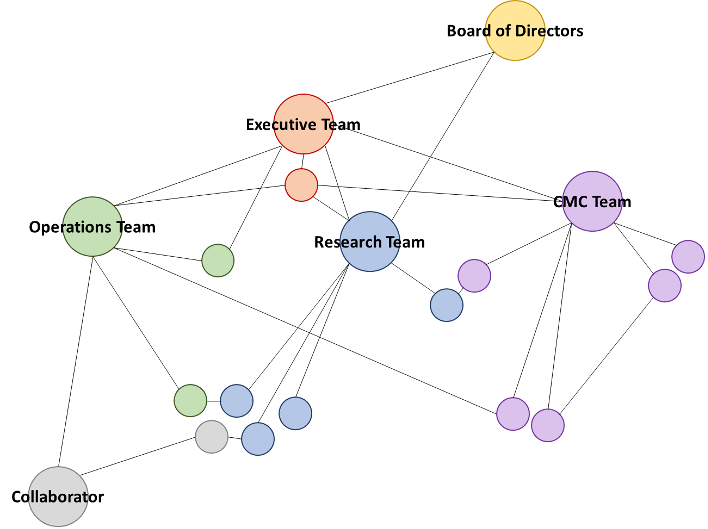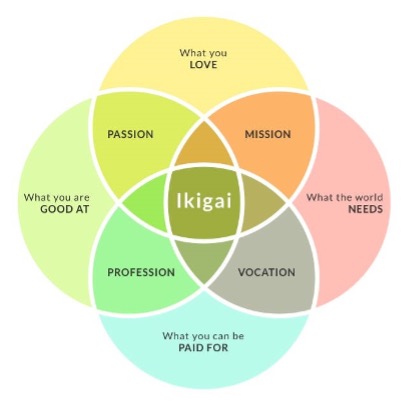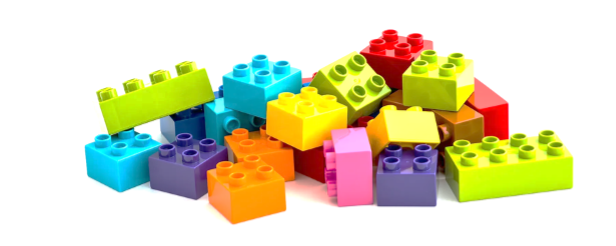Share your Legos: Building a Culture of Collaboration
Jonathan Thon, Ph.D. • August 19, 2022
Being at the earliest stages of a company as fast-growing as ours is both inspiring and daunting. We are building the company together as we grow, and this means that everyone has multiple talents and functions to contribute to the interconnected processes and programs we’re developing. Drawing on an analogy coined by Molly Graham, each team member has multiple Lego pieces to add to the diverse structures that need to be constructed.[i] Navigating the masses of available Legos can be overwhelming, and it’s hard to predict what combinations of bricks will provide the strongest foundations for the towers we’re erecting.
It’s also human nature to become anxious and territorial as new people are added to the team; there’s an inherent worry that the new person won’t know how to contribute to what you’ve already built, that they’ll take all the best Legos for themselves, or in the worst-case scenario that they’ll leave you without any structures of your own to build. While predictable, these emotions can be unnerving.
The truth is, for a company culture to support and withstand fast growth, and to scale proportionately, everyone needs to be flexible and equipped to share their Legos.
This truth applies to everyone, including our Founding team. I recall vividly the unrest I felt the first time I recognized that there were going to be company meetings I would no longer attend and decisions that I would no longer make — this feeling hasn’t gone away with the subsequent companies I’ve built. Nevertheless, as a company grows, it’s essential that people share the first few floors of their Lego towers. Transferring knowledge and responsibility to newer employees is the only way a company can build on its early success to develop more complex and impactful structures.
For every Lego each of us gives away, there is always a larger pile of pieces waiting for us, and bigger and better towers ready to be built. Adding people doesn’t mean less work; it means that we can do more, together. We are leaning into this scaling approach at STRM.BIO and ask individuals from different teams to commit to gathering in clusters to actively donate their Lego to new builds. This ethos helps new employees to find their purpose based on interests, skills, and the organization’s needs. And it all starts with our values.
Our Values
STRM.BIO is not just a biotech company; it’s a corporate philosophy that drives all our decision-making. We express this philosophy through a set of key principles that we have adopted as our company values:
make it simple
Our strategic and scientific approaches are driven by a belief that there is both elegance and efficiency in simplicity. A simpler path to the same outcome will always be better: for our current programs, as a foundation for our future scientific breakthroughs, and as treatment options for the patients we’re ultimately striving to help.
health is our purpose
We’re passionate about our technology and the innovative science that underpins it. However, we measure our success not in publications, patents, or capital raised, but in the positive impact that our work has on the health and wellbeing of patients and their families, bringing transformative new therapies to people who need them.
collaborate to innovate
We see ourselves as disruptors in the gene therapy space. But we don’t have all the answers — in fact, we believe that no one does. We see collaboration as the path to innovation, bringing together smart people and novel ideas to create new possibilities.
focus on people
We’re creating a culture where people come first, and where personal accountability fosters a healthy organization. At the same time, we strive to find joy in our work, never taking ourselves too seriously. We believe that play is at the heart of innovation, and that humor and joy open us to new ways of thinking.
To be successful in biotech, it’s not enough for a company to have great technology, an experienced management team, and deep pockets. If that were true, our sector wouldn’t have an 85–95% failure rate. In this challenging and hyper-competitive industry, the only true differentiator is innovation — finding new creative solutions to important problems by betting against the current consensus and being right.
When your goal is to save the lives of people with diseases we are only beginning to understand —innovating with incomplete toolsets that we’re not sure will work — consistent success can only be driven by collaborative means. Systems aren’t built by individual “geniuses,” as many people believe; they run on teamwork.
It’s been said that entrepreneurship is the exercise of jumping off a cliff and building an airplane before you hit the ground. While this experience can be scary, it is also how we learn to fly.
Our Approach to Teamwork
To overcome complex and multifaceted challenges, biotech companies need to assemble small teams of specialists quickly and nimbly across broad areas. This is why we believe that the team is more important than the technology. As the science evolves, good technologies and good ideas are rapidly superseded by better ones. A strong team can navigate existing paths swiftly or chart new ones to make consistent progress in this shifting landscape.
Diversity is at the core of our strategy. We aim to leverage the varied, complementary experiences and perspectives represented within our team to curate a culture in which everyone is heard. Our decision-making is driven by meritocracy, with opinions weighted by their quality and supporting rationale rather than seniority or title. At STRM.BIO, no one person’s voice automatically carries more weight than another’s, and our most junior employees have the same access to the CEO and other executive management as anyone else. Every team member is trusted and expected to help direct the company’s strategic trajectory.
We prioritize organizational transparency and collaboration. While each of our employees has a specific role, or position on a team to ensure that it is always very clear who ‘owns’ a program, they each have varied responsibilities, or tasks and duties they assume within the company, and regularly extends beyond the team into which an employee is initially recruited; this is their pile of Legos. For example, an employee’s role may be a Senior Scientist in R&D, reporting to our Senior Director of Research and supervising a Research Associate, but their responsibilities may include spearheading a business development deal or managing a strategic partnership that they helped source.
We care deeply about the decision-making principles we employ as we scale our team. We set the bar very high when it comes to recruitment and strive to raise that bar with every hire such that the company grows not just bigger and more diverse but also stronger. We hire only people who are smarter and more capable than us, and then give them the runway to execute their ideas. Cultural fit is weighted equally with technical fit, and collaborative dynamics are at the core of the team we are assembling. We seek talented, high-performing individuals who can nucleate strong teams around critical problems and empower them to eliminate blind spots in our collective ideas and perspectives. Leaders at STRM.BIO emerge organically through a track record of getting things done and excelling at team building. Advancement and professional development opportunities are defined by the company’s strategic focus, and by an employee’s drive and involvement, not their title.
Our System & Structure
We empower all our team members to act independently and enable them to pull others into their decision-making to solve problems in real time. Central to this management philosophy is the trust we place in every individual we recruit to contribute their diverse perspectives, experience, and skillsets, but also to offer these contributions from a place of humility, empathy, and respect for others. This is essential to creating trust within teams.
The result is a highly collaborative environment in which clusters form rapidly around challenges as they present themselves, and disassemble just as quickly as decisions are made and programs advance. These self-managed teams can be organized around our junior scientists just as easily as our senior executives; all individuals are free to go to anyone within the organization to pull who and what they need to best solve the challenge at hand.
The usual organizational structures are much more fluid within a cluster, and information flows freely in all directions. Clusters generally form across teams and can include executives or the CEO alongside scientific and technical personnel, as appropriate based on need. This dynamic problem-solving structure is not limited to the internal company; we actively include our scientific collaborators, advisers, consultants, investors, and board members in this model to draw in the individuals best positioned to address the task at hand. Following the group discussion phase, the final decision-making responsibility rests with the ‘team lead’. The company then aligns behind each decision and reinforces the chosen strategy to give it the best chance for success.

As a company scales, teams need to evolve to meet new challenges. Recruitment is a continuous exercise in matching gaps in the company’s talent pool with an individual’s combined passion, mission, profession, and vocation to create a shared reason for being. In this philosophy, as described by the Ikigai model[ii] illustrated below, these are transient relationships that can last for months or years but that are always evolving as both the company’s needs and the individual’s goals change. This philosophy extends to all levels of the company; even the roles of the CEO and external board members are, by definition, temporary, aligned for a finite window in time.
A company is a vehicle with a purpose, and our culture strives to create continuous alignment in purpose across our team. This is not possible without honesty, transparency, and trust.

Our Culture of Accountability
Our culture is important to us; it’s what fosters the environment that enables us to fulfill our promises and potential, and is driven by our principles, the science, and our overarching strategy. We strive to create a working atmosphere of personal ownership, where we are professionally challenged, treated fairly, and where we clearly understand what is expected of us. Our success depends on our team feeling comfortable with communicating and collaborating openly; that is how we accomplish more and do our best work. We value the freedom, flexibility, mutual respect, and depth of experience and insight that come with working within an inclusive and culturally diverse team. We are driven by a collective passion to fulfill the promise of gene therapy, and this is what fuels our innovation and drive. We’re all committed to improving human health.
By aligning around purpose rather than command structures, we create an environment in which every individual holds themselves accountable. With few top-down instructions to follow, our teams have a great deal of freedom to decide what they want to work on and how they can leverage their strengths to make the greatest contributions to our collective vision of the company. It’s up to individuals to negotiate responsibilities with their peers, within the scope of the team’s current projects.
It is typical for STRM.BIO employees to contribute different percentage efforts to multiple projects at any given time. Because individuals are often involved in multiple teams, a leader of one team may be a regular member of others. As CEO I don’t run our research meetings despite having been a Professor and CSO in the past, and my involvement in teams is based on what I consider to be the priority projects to which I feel I can add value, like everyone else.

Putting the Pieces Together
As we move forward together, we will continue to revisit these grounding principles. We begin all STRM.BIO meetings by re-centering on our company purpose, leading every discussion with a reminder of ‘why’ we’re building what we’re building.
Every team member has the right to understand and challenge the rationale for a decision, and our leaders need to be able to justify the company’s actions to its employees. This level of engagement lets us refine ideas and make better decisions based on data and logic versus ego and gut. We hold monthly ‘All Hands’ meetings at which I provide these updates and am held accountable, directly, for the decisions of the organization. Everyone is encouraged to speak, and we deal directly with ‘elephant in the room’ topics. This can be jarring, but it forces a level of transparency and quality of communication that keeps the team aligned and focused on what matters most, and rewards egalitarian behavior that promotes performance-driven outcomes.
Always remember that we are building these Lego towers together. Many diverse, specialized pieces are needed to put together multiple complex and sturdy structures, all against a backdrop of time pressures, capital pressures, and communication challenges that can make the task seem even harder. However, with strong foundations of trust, accountability, and collaboration, we can continue to build taller, growing upward, together.
[i] https://review.firstround.com/give-away-your-legos-and-other-commandments-for-scaling-startups